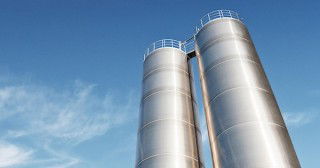The US cement market is increasingly accepting lower-carbon cements such as Portland limestone and ternary blended cements. Cement producers such as CalPortland Cement are including these types of cement to help lower their carbon footprint as part of a range of decarbonisation measures. By CalPortland Cement, USA.
The transition from production and use of Portland cements (Type I, II and V – ASTM C150) to hydraulic blended cements (IL, IP, IT, and IS – ASTM C595) has accelerated within the last few years in the USA. This transition has mainly been the result of acceptance by governmental agencies such as Departments of Transportation (DoTs), followed by other public and private sectors. Use of blended cements is a scientifically-proven lever for reducing the embodied CO2 of concrete as outlined in national, regional, and global roadmaps (PCA, GCCA, CEMBUREAU, etc1-4) identified by cement and concrete value-chain stakeholders.
